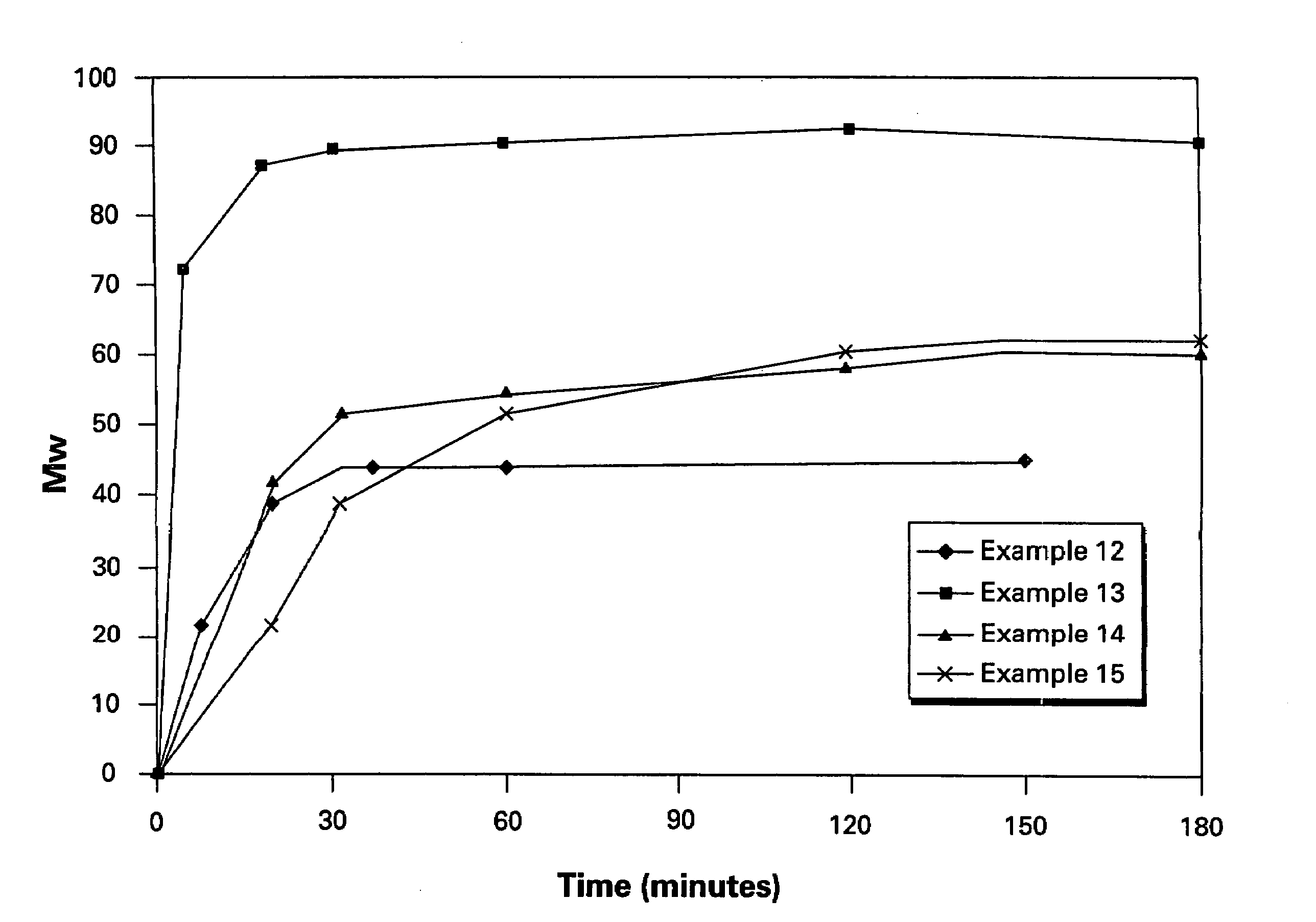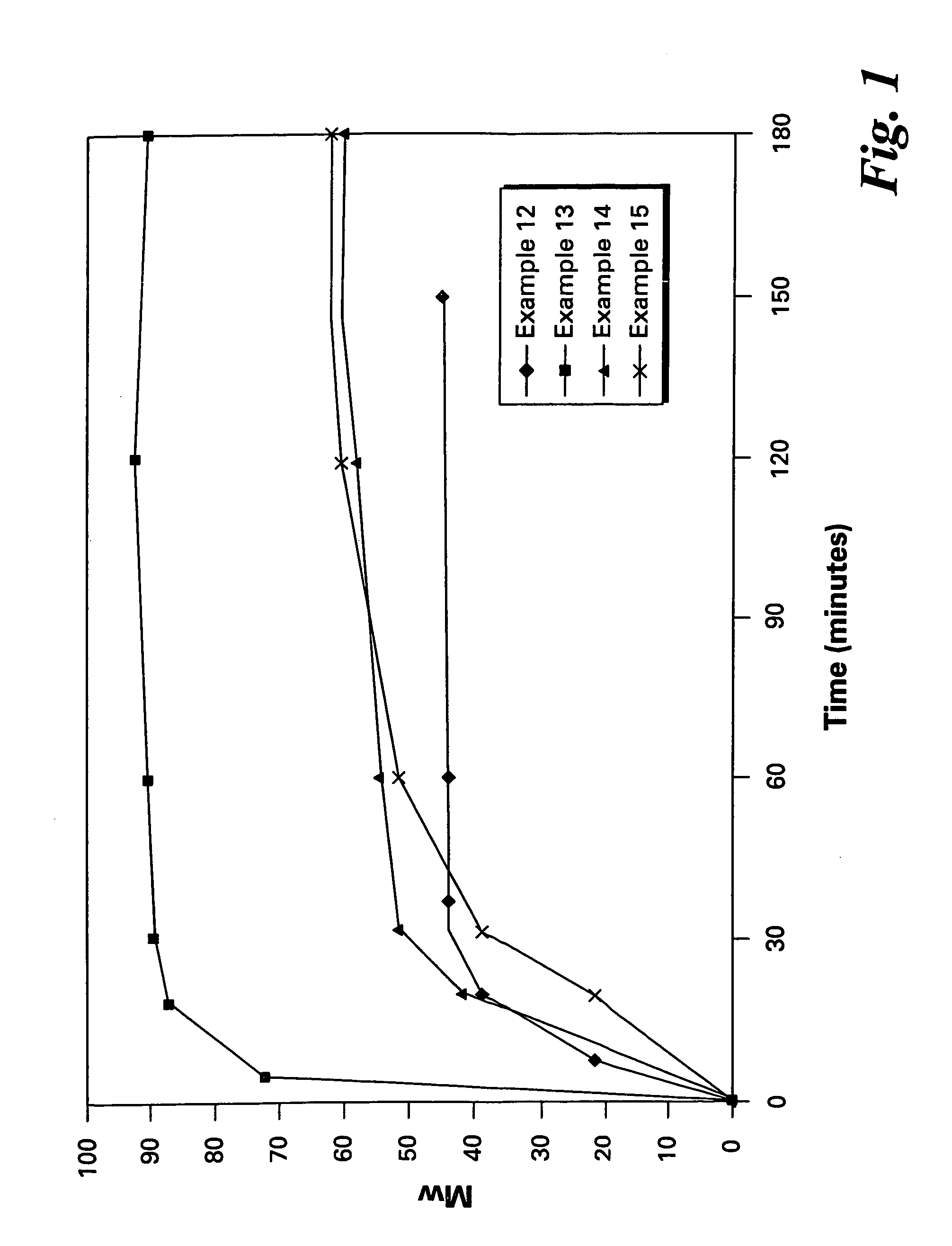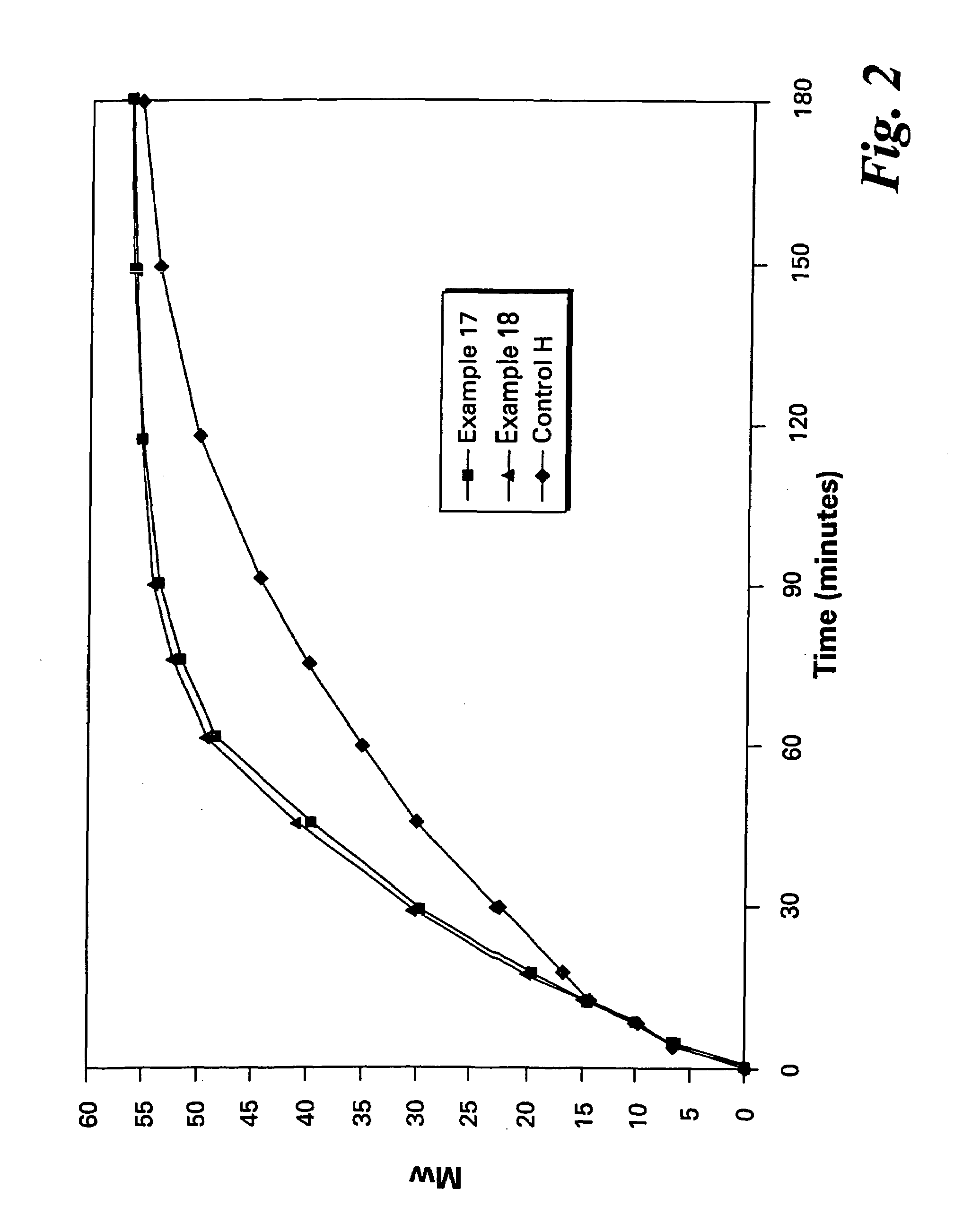Phase transfer catalyzed method for preparation of polyetherimides
a phase transfer and catalytic technology, applied in the field of preparation of polyetherimides, can solve the problems of many steps in the preparation of dianhydride, product color and contamination, and no method for controlling the molecular weight of the produ
- Summary
- Abstract
- Description
- Claims
- Application Information
AI Technical Summary
Benefits of technology
Problems solved by technology
Method used
Image
Examples
example 1
Embodiment A
[0089]A slurry of ClPAMI in ODCB was prepared by the reaction of m-phenylenediamine with 4-chlorophthalic anhydride in a 250 ml three-necked flask and stored until use under nitrogen, along with a measured amount of 1-(N-(4-chlorophthalimido))-3-(N-phthalimido)benzene as CTA. The flask was fitted with a nitrogen sparge tube atop a reflux condenser, a mechanical stirrer and a distillation apparatus. A further portion of ODCB was added, and distillation was performed under nitrogen to dry the slurry to a water content of at most about 10 ppm. BPA-Na slurry in ODCB was dried similarly in a separate flask.
[0090]When both slurries were dry, the BPA-Na slurry was added to the ClPAMI slurry by pouring quickly under nitrogen and rinsing with dry ODCB, in a molar ratio of aryl chloride groups to ONa groups of 1.01:1 and a polymer solids level of 25%. A final distillation was performed to reduce the water content to at most 10 ppm.
[0091]HEGCl, 0.8 mole % (based on BPA-Na), was add...
example 2
Embodiment A
[0092]Predried and isolated reagents ClPAMI, CTA, BPA-Na and dry ODCB (5 ppm water content) were added together to a 250 ml three-necked flask and heated to reflux. HEGCl, 0.8 mole % (based on BPA-Na), was added to the mixture at 190° C., a timer was started and samples were removed periodically, quenched with acetic acid and analyzed for molecular weight. The initial reaction rate (in units of kilograms / mole minute) was calculated as the slope of the molecular weight-time curve from 0 to 30 minutes.
example 3
Embodiment A
[0093]The procedure of Example 1 was followed except that the reaction was spiked at 180° C. with wet ODCB to a total water content of 45 ppm before catalyst addition. The amount of additional ODCB added was such that the % solids level remained at about 25%.
PUM
| Property | Measurement | Unit |
|---|---|---|
| diameter | aaaaa | aaaaa |
| diameter | aaaaa | aaaaa |
| particle size | aaaaa | aaaaa |
Abstract
Description
Claims
Application Information
 Login to View More
Login to View More - R&D
- Intellectual Property
- Life Sciences
- Materials
- Tech Scout
- Unparalleled Data Quality
- Higher Quality Content
- 60% Fewer Hallucinations
Browse by: Latest US Patents, China's latest patents, Technical Efficacy Thesaurus, Application Domain, Technology Topic, Popular Technical Reports.
© 2025 PatSnap. All rights reserved.Legal|Privacy policy|Modern Slavery Act Transparency Statement|Sitemap|About US| Contact US: help@patsnap.com



